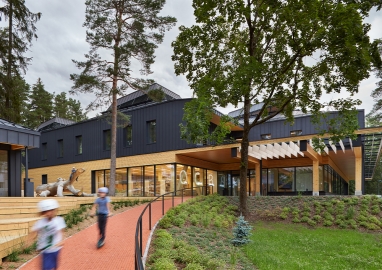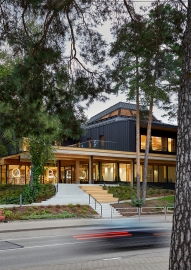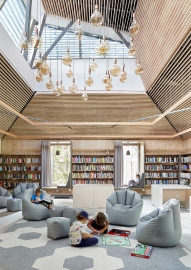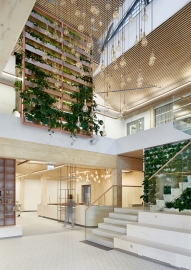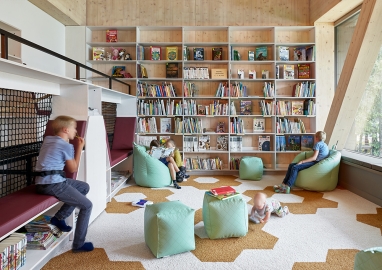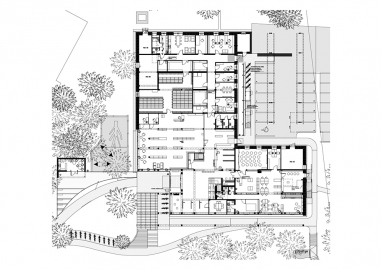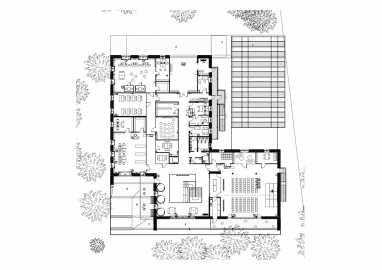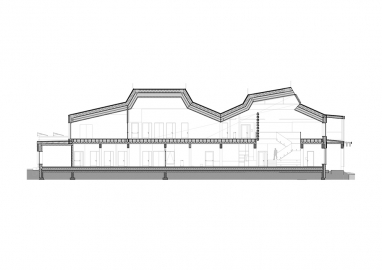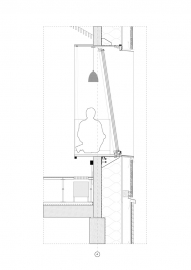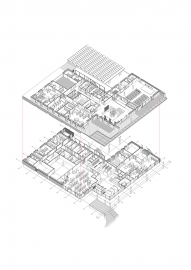Ogre Central Library and marriage registry
Project creates a place-specific, multi-functional public center for local people and visitors. In its form inspired by 20th century resort-town summer houses with wooden facades and large sloped metal roofs, library is designed as a zero-energy building, made of CLT and equipped with resource saving technologies that can be monitored by visitors.
The Ogre resort town, which is a home to a lot of wooden summer houses with pitched roofs, nestled amidst the pristine forest and river, served as the muse for the community library. Carefully situated on the hilly terrain, the building harmoniously coexists with the natural forest, reflecting the reserved nature of Latvians. Designed to be more than just an institution, it embodies an open public space for community interaction, learning, and relaxation.
This multifaceted center comprises various reading and working rooms, an expansive children's library, a dedicated youth library, a generous conference hall with a terrace and a kids' area, a charming summer café for outdoor library activities, and even a Civil Registry Office with a marriage ceremony hall. The pitched roof structures elegantly delineate these distinct functions.
To better understand the needs of this complex project, many different user groups were engaged in the brainstorming and planning process early on. Designers went to nearby schools, youth organizations, and local cultural centres and even organized a survey in the local Facebook group for mothers. Many different ideas like a special baby playing area with adjacent care and feeding room and a traverse rock-climbing wall in the kids' games room were introduced. The location required a high degree of care to place this building between the pine trees and protect them during construction.
It is a wooden building with a metal frame roof structure. Wood allowed to blend in the local context and added emotional and environmental value. Load-bearing walls are made of CLT panels. Columns, beams, and floor panels are GLT to ensure longer spans.
The facade is clad with light larch on the first floor and with dark titan zinc on the second story and roof. This proportion of material, the division is traditional for local buildings. Bleached wooden constructions are exposed in the interior. The second story has suspended pine wood ceiling panels with space behind for communications. Soft pastel colour mosaic carpets, upholstered windowsills, and bookshelves invite visitors to feel at home.
For heating and cooling the building, there are water-air heat pumps with the external contour in the city's central sewage system reservoir. Electricity for heat pumps is produced with a solar panels in the courtyard above car parking. Rainwater from the roof is collected and used for watering the green walls with an air biofilter function in the atrium. There is a dashboard with live data and explanatory animations about the innovative building systems installed in the atrium.

